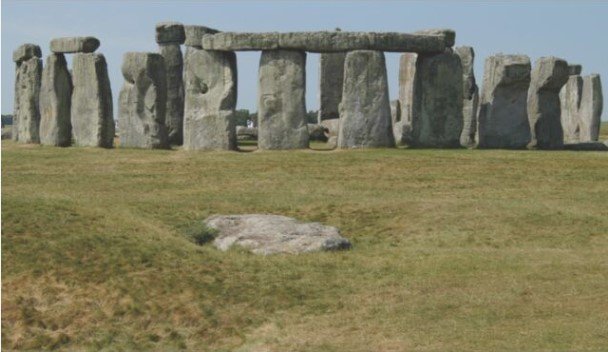The Mystical Journey of Stonehenge’s Altar Stone: A Scientific Revelation from Scotland
Stonehenge, one of the world’s most enigmatic ancient monuments, has long captivated the imagination of historians, archaeologists, and curious minds alike. Standing on the Salisbury Plain in Wiltshire, England, this prehistoric stone circle has been the subject of countless theories, ranging from celestial observatories to religious temples. Among its many mysteries, the origin of the Altar Stone has puzzled researchers for decades. However, recent scientific studies have shed light on this ancient riddle, pointing to a surprising origin: Scotland.
Stonehenge and the Enigma of the Altar Stone
At the heart of Stonehenge lies the Altar Stone, a massive block of greenish-gray sandstone that stands out among the other stones due to its unique composition and central location. Unlike the towering sarsen stones that dominate the site, or the smaller bluestones transported from Wales, the Altar Stone has remained a geographical outlier. Its precise origin has been a matter of debate, with theories ranging from local quarries in England to distant locations across Britain. But now, scientists believe they have found the true source of this mysterious stone.
The Journey to Discovery
In a groundbreaking study, geologists and archaeologists collaborated to analyze the mineral composition and geological characteristics of the Altar Stone. Using advanced techniques such as petrographic microscopy and X-ray fluorescence (XRF) analysis, they compared the stone’s mineral content with samples from various regions across the UK. After extensive research, the results pointed to an unexpected source: the Midland Valley of Scotland.
The Midland Valley, a region rich in geological diversity, is home to sandstone deposits that closely match the composition of the Altar Stone. This revelation challenges previous assumptions that the stone originated from closer locations, such as South Wales or the West Midlands. The discovery that the Altar Stone may have come from Scotland adds a new layer of complexity to the already intricate story of Stonehenge’s construction.
The Significance of the Scottish Connection
The idea that the Altar Stone was transported from Scotland, over 400 kilometers away, raises intriguing questions about the logistics and cultural significance of Stonehenge. How did the ancient builders move such a massive stone across such a vast distance? What motivated them to select this particular stone from Scotland when more accessible options were available?
One theory is that the Altar Stone held special symbolic or ritualistic importance. The effort required to transport the stone from Scotland suggests that it may have been imbued with spiritual or cultural significance, possibly representing a connection between the builders of Stonehenge and distant communities in Scotland. The journey of the Altar Stone may have been part of a broader network of trade, communication, and cultural exchange that spanned ancient Britain.
Technological Marvels of Ancient Builders
The transportation of the Altar Stone, along with the other stones at Stonehenge, is a testament to the ingenuity and determination of the ancient people who constructed the monument. Moving such massive stones over long distances without modern machinery would have required sophisticated engineering techniques and a deep understanding of the landscape.
Researchers believe that the builders may have used a combination of sledges, rollers, and waterways to transport the stones. The discovery of ancient trackways and river routes supports the idea that Stonehenge’s stones were moved using a combination of land and water transportation. The fact that the Altar Stone was transported from Scotland adds to the awe-inspiring nature of this achievement.
A New Chapter in the Story of Stonehenge
The identification of Scotland as the likely source of the Altar Stone is a significant breakthrough in our understanding of Stonehenge. It not only provides answers to one of the monument’s enduring mysteries but also opens up new avenues of research. The discovery invites us to reconsider the connections between different regions of ancient Britain and the cultural and spiritual motivations behind the construction of Stonehenge.
As scientists continue to explore the origins of Stonehenge’s stones, the revelation of the Altar Stone’s Scottish connection reminds us that even after centuries of study, Stonehenge still has secrets to reveal. Each new discovery adds to the rich tapestry of history that surrounds this iconic monument, deepening our appreciation for the ingenuity, creativity, and determination of the people who built it.
In conclusion, the journey of Stonehenge’s Altar Stone from Scotland to Wiltshire is a story of mystery, innovation, and cultural significance. As we unravel the secrets of this ancient monument, we are reminded that Stonehenge is not just a collection of stones but a testament to the enduring human spirit and our timeless quest to understand the world around us.




